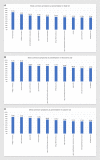Presenting symptoms in inflammatory bowel disease: descriptive analysis of a community-based inception cohort
- PMID: 30940072
- PMCID: PMC6446285
- DOI: 10.1186/s12876-019-0963-7
Presenting symptoms in inflammatory bowel disease: descriptive analysis of a community-based inception cohort
Erratum in
-
Correction to: Presenting symptoms in inflammatory bowel disease: descriptive analysis of a community-based inception cohort.BMC Gastroenterol. 2020 Dec 3;20(1):406. doi: 10.1186/s12876-020-01526-2. BMC Gastroenterol. 2020. PMID: 33272202 Free PMC article.
Abstract
Background: Few data are currently available on the initial presenting symptoms of patients with inflammatory bowel disease (IBD).
Methods: We evaluated the initial symptom presentation of patients with IBD in the Ocean State Crohn's and Colitis Area Registry (OSCCAR), a community-based inception cohort that enrolled Rhode Island IBD patients at time of diagnosis with longitudinal follow up. A 41-question symptom inventory was administered at time of enrollment to capture symptoms experienced during the 4 weeks preceding diagnosis of IBD. Frequencies of presenting symptoms were calculated. Principal component analysis (PCA) with promax rotation was used to examine possible symptom profiles among Crohn's disease (CD) and ulcerative colitis (UC) patients, respectively. Using the Scree plot, the 4-component solution was found to be optimal for both CD and UC.
Results: A total of 233 CD and 150 UC patients were included. The most common presenting symptoms in CD were tiredness/fatigue (80.6%) and abdominal pain (80.4%) while passage of blood with bowel movements (BM) (86.6%) and loose/watery BMs (86.5%) were most common in UC. The 5 symptoms with greatest differences between UC and CD were passage of blood with BM (UC 86.6%/CD 45.3%), urgent BM (UC 82.5%/CD 63.9%), passage of mucus with BM (UC 67.7%/CD 36.9%), passage of blood from the anus (UC 59.7%/CD 32.1%), and anxiety about distance from bathroom (UC 59%/CD 38.7%). The PCA analysis yielded a 4 symptom components solution for CD and UC.
Conclusion: The most common presenting symptoms in CD are fatigue and abdominal pain while in UC bloody BM and diarrhea are most common. Distinct symptom phenotypes are seen with PCA analysis. Our study demonstrates symptomatic similarities and differences between CD and UC and suggests that patients may also be classified by symptom phenotype at time of diagnosis.
Keywords: Crohn’s disease; Inflammatory bowel disease; Ocean State Crohn’s and Colitis Area Registry; Presenting symptoms; Principal component analysis; Ulcerative colitis.
Conflict of interest statement
Ethics approval and consent to participate
The present study was approved by the Ethics Committee of Lifespan affiliated hospitals including Rhode Island Hospital, The Miriam Hospital, and Hasbro Children’s Hospital. Written informed consent was obtained from each patient included in the study.
Consent for publication
Not applicable.
Competing interests
The authors declare that they have no competing interests.
Publisher’s Note
Springer Nature remains neutral with regard to jurisdictional claims in published maps and institutional affiliations.
Figures




References
-
- Silverberg MS, Satsangi J, Ahmad T, et al. Toward an integrated clinical, molecular and serological classification of inflammatory bowel disease: report of a working party of the 2005 Montreal world congress of gastroenterology. Can J Gastroenterol. 2005;19:5A–36A. doi: 10.1155/2005/269076. - DOI - PubMed
-
- Mekhjian HS, Switz DM, Melnyk CS, et al. Clinical features and natural history of Crohn’s disease. Gastroenterology. 1976;77(4 Pt 2):898–906. - PubMed
MeSH terms
Grants and funding
LinkOut - more resources
Full Text Sources
Other Literature Sources
Medical

